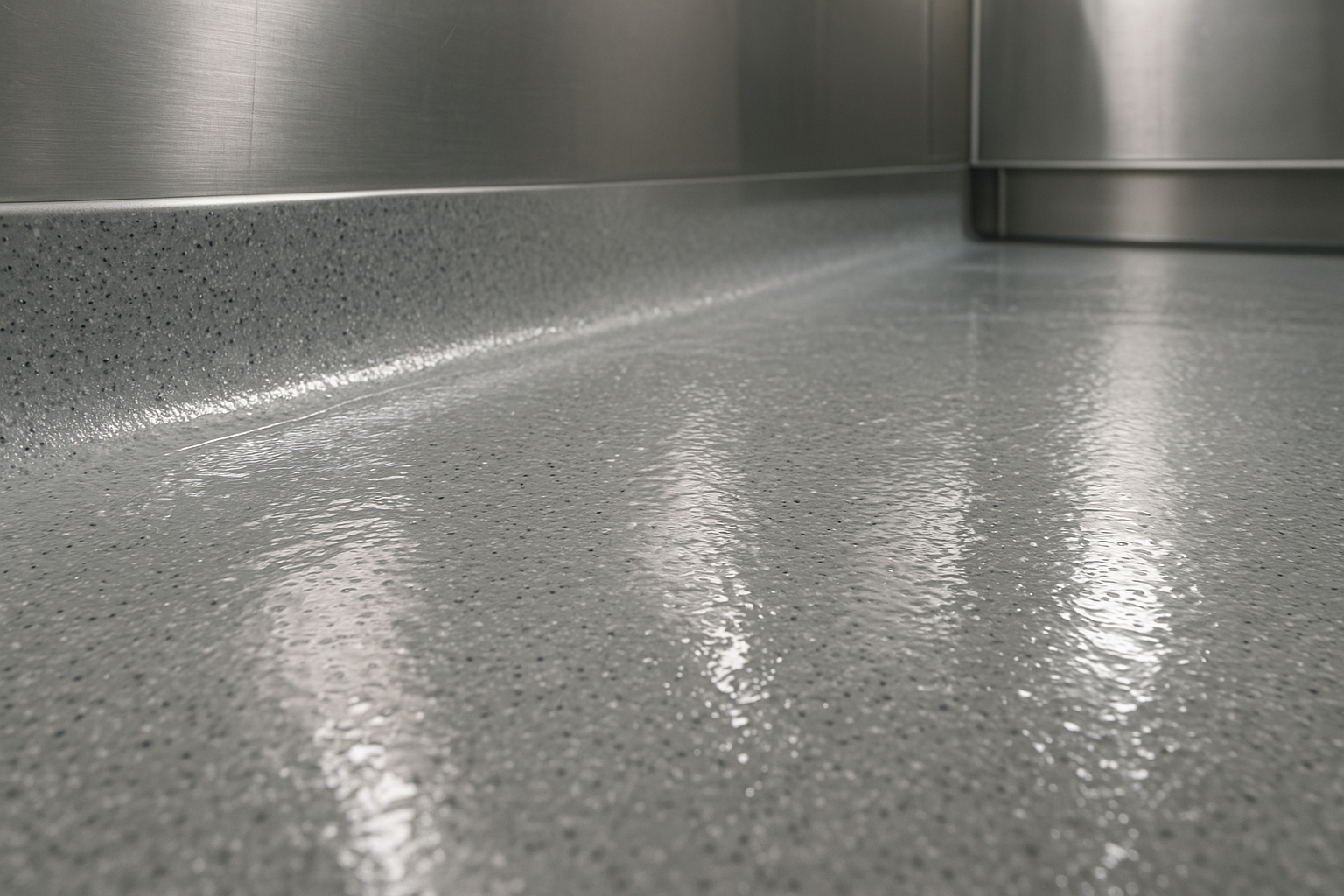What Is a Cove Base?
A cove base is a curved transition between the floor and the wall, typically rising 4 to 6 inches up the wall with no sharp angle at the floor joint. In epoxy or urethane cement systems, this base is formed from the same material as the floor — making it fully seamless and integral.
Why Cove Bases Are Critical
1. Hygiene & Sanitation
Without a cove base, dirt, moisture, and bacteria can collect in the 90° angle where the floor meets the wall. This becomes a breeding ground for mold, pests, and contaminants.
2. Regulatory Compliance
USDA, FDA, and many local health departments require seamless wall-to-floor transitions in food plants, kitchens, and medical facilities.
3. Durability
A cove base protects walls from impact from carts, mops, and equipment — extending the life of your finishes.
4. Easy Maintenance
Because there are no gaps or seams, cleaning crews can easily mop or pressure wash floors without worrying about water intrusion or damaged drywall.
Flooring Systems with Integrated Cove Bases
Epoxy Flooring Systems
- Seamless epoxy resin rises up the wall for a continuous barrier
- Chemical-resistant options available for harsh cleaners
- Perfect for commercial kitchens, breweries, and pharmaceutical spaces
Cementitious Urethane Flooring
- Extremely thermal-shock resistant — ideal for hot water washdowns
- Handles constant moisture exposure
- Common in dairies, food processing plants, and cold storage
Polished Concrete (with Separate Cove Options)
- Polished concrete slabs can pair with precast or poured cove bases for a partial seamless solution
- Great for showrooms, labs, and facilities where aesthetics are critical
Where Cove Bases Are Essential
- Breweries & Distilleries: Prevent bacterial buildup in wet zones
- Commercial Kitchens: Meet health code standards
- Hospitals & Labs: Support infection control
- Food Processing Plants: USDA/FDA compliance
- Supermarkets: Behind-the-scenes prep areas
- Cleanrooms: Meet ISO class requirements
Designing the Perfect Seamless Transition
When planning your floor, consider:
- Height of the cove base (4", 6", or higher for heavy washdowns)
- Radius (standard vs. sanitary cove)
- Chemical exposure (choose resin that resists cleaning agents)
- Traffic load (impact resistance for carts and pallet jacks)
- Color matching (integrate with floor color for a uniform look)
Cost vs. Benefit
Yes, installing a cove base adds cost up front — but it saves money over time:
- Fewer health code violations
- Less water damage to walls
- Reduced cleaning time and chemicals
- Less frequent repairs from impact damage
The ROI is clear: a properly designed cove base system can save thousands annually in maintenance and compliance costs.
Surface Solutions’ Process
- Site Assessment – Evaluate wall conditions, moisture levels, and use case
- System Recommendation – Choose epoxy, urethane, or hybrid solution
- Precision Installation – Hand-troweled or machine-formed cove bases with perfect radius
- Finish & Seal – Ensure complete seamless integration
Build a Facility That Passes Every Inspection
Call 877-CSTM-FLR
Email carolina@cstmflr.comVisit www.cstmflr.com
Let’s build floors — and walls — that protect your people, your products, and your reputation.


.png)
